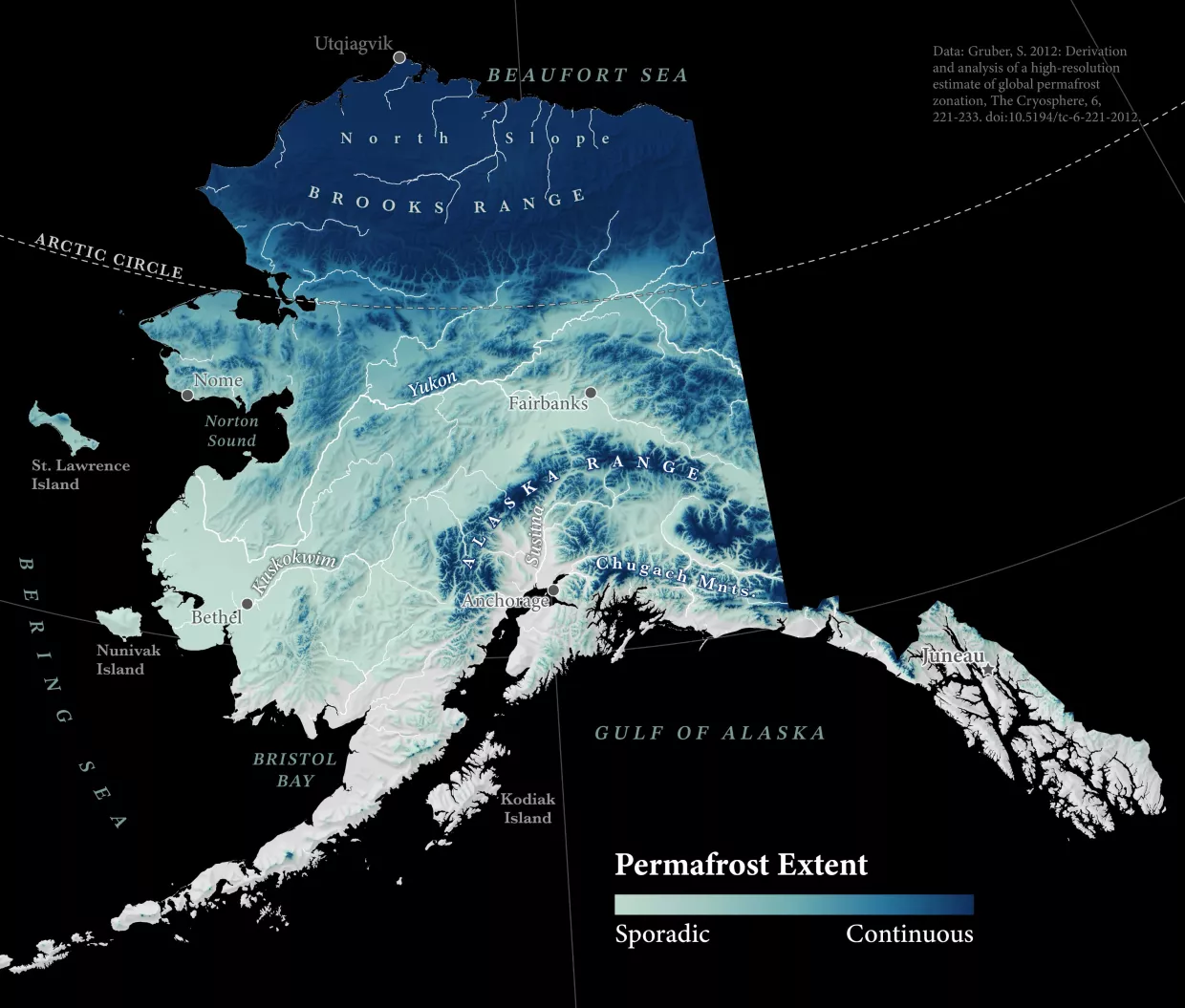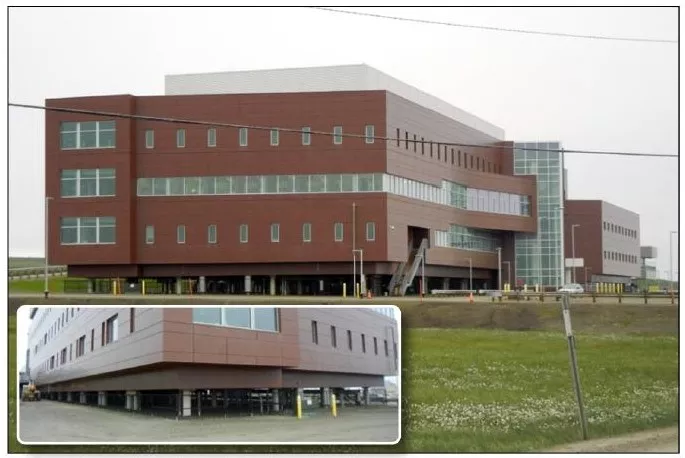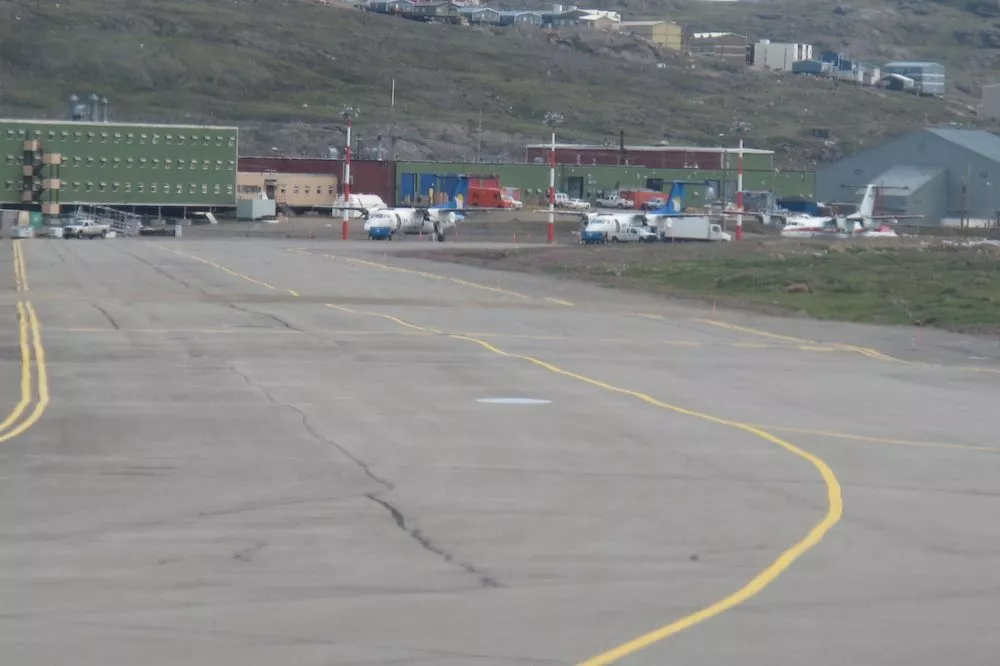Permafrost Thaw in Alaska: An Overlooked Climate-Health Crisis
Rapid thawing of permafrost has accelerated a public health crisis in Alaska by disrupting access to clean water, sanitation resources, and basic health infrastructure.
Rapid thawing of permafrost has accelerated a public health crisis in Alaska by disrupting access to clean water, sanitation resources, and basic health infrastructure.

Rapid thawing of permafrost has accelerated a public health crisis in Alaska by disrupting access to clean water, sanitation resources, and basic health infrastructure. For example:
As this concept note explains, these outcomes are not inevitable or irreversible. Rather, strategic investments by the U.S. federal government, Alaska state agencies, Tribal government, and other community-based entities can help to bolster financial and technical assistance programs and infrastructure that will better enable those affected by permafrost thaw to adapt and build resilience to public health disruptions.
| Public Health Infrastructure Governance in Alaska | |
|---|---|
| Scales of Management | Key Institutions |
| Government | |
| Federal | Denali Commission, U.S. Environmental Protection Agency, U.S. Department of Agriculture, Indian Health Service, U.S. Department of Interior, U.S. Economic Development Administration, U.S. Department of Homeland Security, Center for Disease Control |
| State | Alaska Department of Environmental Conservation, Alaska Department of Commerce, Community, and Economic Development, Rural Utility Business Advisory Program (RUBA), Division of Public Health |
| Borough/Municipal | Local government agencies (manage roads, landfills, water and sewer) |
| Tribal | Tribal councils |
| Non-Governmental | |
| Alaska Native Tribal Health Consortium (ANTHC), Alaska Municipal League, Rural Community Assistance Corporation, Alaska Rural Water Association, Youth Alliance for a Healthier Alaska, Alaska Native Health Board | |
Permafrost, rich in stored carbon,1 is continuously frozen ground that underlies ~85% of Alaska’s land area.2 As permafrost thaws, the softening ground can destabilize local ecosystems and cause disruptions to surface and subsurface infrastructure, including homes, buildings, roads, and public utilities. In worst-case scenarios, permafrost thaw and compounding erosion and flooding can result in permanent land collapse, or 'usteq' in Yup’ik. Nearly 170,000 people, representing 192 communities in Alaska, live in permafrost zones,3,4 and are consequently affected by the direct impacts of permafrost thaw. There are 229 federally recognized Tribes in Alaska,5 each with distinct cultural practices and ways of life that are particularly impacted by these changes.6

Permafrost thaw puts thousands of Alaskans at serious risk of water contamination, subsistence food shortages, hospital closures, severe mold exposure, and other physical and mental health challenges. Permafrost thaw also threatens Native Alaskans’ access to natural resources and traditional practices, including firewood gathering, hunting, fishing, and trapping.
These consequences are not only of immediate concern to affected populations but signify a violation of fundamental health freedoms to which the global population is entitled. Successful safeguards of such health freedoms are those that meet four essential criteria: availability, accessibility, acceptability, and quality.7 Health services must be available in sufficient quantities with functioning facilities, accessible without financial or physical barriers, acceptable to cultural practices, and meeting standards of quality for safety and effectiveness. Despite efforts by the U.S. federal government, Alaska state government, and Tribal governments and entities to implement such safeguards via institutional and policy frameworks, permafrost thaw threatens all four pillars of this right to health.
As this concept note explains, the effects of permafrost thaw contribute to discrete and measurable disruptions to the physical infrastructure and natural ecosystems that uphold environmental health in Alaska.
While the health impacts of permafrost thaw are extensive, this report will focus on some of the most acute health hazards, including contamination of safe drinking water, disruption of access to hospitals and healthcare, and contribution to food and housing insecurity. The included considerations for policymakers highlight opportunities to combat these challenges using government and community resources.
Permafrost thaw can pollute drinking water sources and damage sewage and sanitation infrastructure, exposing rural Alaskans to waterborne and water-washed diseases, and reducing the availability, accessibility, and quality of health services.

Ground destabilization from permafrost thaw has nearly collapsed hospitals and health clinics across Alaska, reducing access to and availability of already limited health services and supplies.


In both Native and non-Native communities, the high costs of imported food make local foods a significant source of nutrients and energy, contributing up to 50% of energy intake in some regions.17 In Alaska Native cultures, subsistence foods are also central to culture, identity, and well-being. Salmon, in particular, carry a distinct spiritual significance in Native practices.18,19 “Wild foods” that are hunted, fished, or gathered are the primary local food source in Alaska. Permafrost thaw disrupts migration patterns of food species, coastal access, and food storage capacity, threatening the availability and accessibility of natural food sources and impeding cultural subsistence practices.
Permafrost thaw has caused catastrophic damage to homes by collapsing or sinking foundations, exposing families to mold and physical safety hazards. As homes become more costly to safely build on permafrost,27 families are overcrowding into multigenerational homes or living in existing unsafe homes.28
The thawing of permafrost in Alaska poses multiple threats to public health, and policymakers must support programs, policies, and initiatives that safeguard the fundamental human right to health. However, permafrost thaw is only one of many public health challenges facing Alaskans. An increasing health risk to Alaskans comes from wildfire smoke exposure. Alaskans exposed to wildfire smoke had higher cardiorespiratory visits to the emergency room both during and several days after exposure.33 Alaskans living in permafrost zones also experience mental health challenges from existential anxiety about the current and future state of environmental conditions in Alaska34 as well as the mental health strains of housing overcrowding. These health risks are compounding stressors for public health. Finally, while some permafrost in Siberia was discovered to have ancient frozen pathogens, harmful pathogens have not yet been discovered in Alaska, and scientists have determined these risks to human health to be low.35
The public health hazards of permafrost thaw are mediated by damage to both the natural environment and critical water, sanitation, housing, and healthcare infrastructure. Programs and advocacy to build infrastructure resilience and protect natural resources can help guarantee Alaskans’ rights to health. Community-based organizations like the Alaskan Native Tribal Health Consortium (ANTHC) are leading these efforts, but additional federal and state resources should help accelerate adaptation and resilience to permafrost thaw and stop the permafrost public health crisis in Alaska.
This concept note was prepared by Aruni Ranaweera and Tessa Varvares for Permafrost Pathways. Woodwell Climate Research Center launched the Permafrost Pathways project in 2022 with funding through the TED Audacious Project—a collaborative funding initiative catalyzing big, bold solutions to the world’s most urgent challenges. Through partnerships with the Arctic Initiative at Harvard Kennedy School, the Alaska Institute for Justice, and the Alaska Native Science Commission, and in collaboration with Alaska Native Tribes, Permafrost Pathways seeks to harness the combined expertise of leading research institutions and on-the-ground organizations specializing in climate science, policy, and environmental justice to inform and develop adaptation and mitigation strategies to address permafrost thaw.
Ranaweera, Aruni and Tessa Varvares. “Permafrost Thaw in Alaska: An Overlooked Climate-Health Crisis.” Belfer Center for Science and International Affairs, April 10, 2025